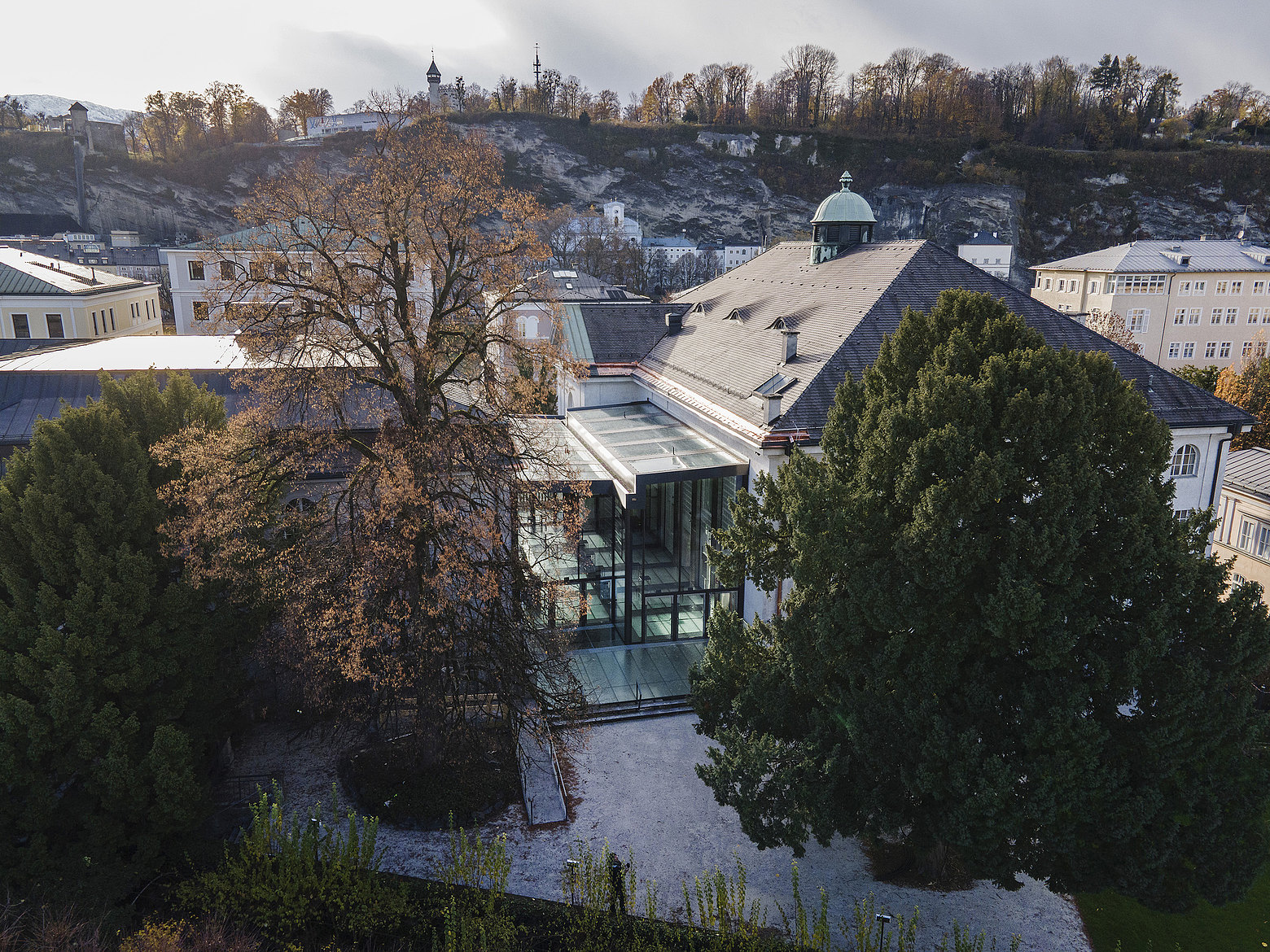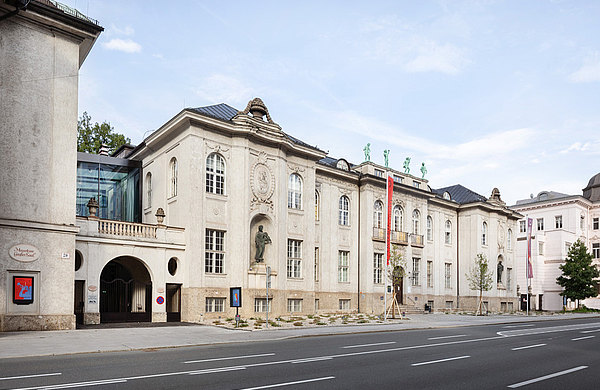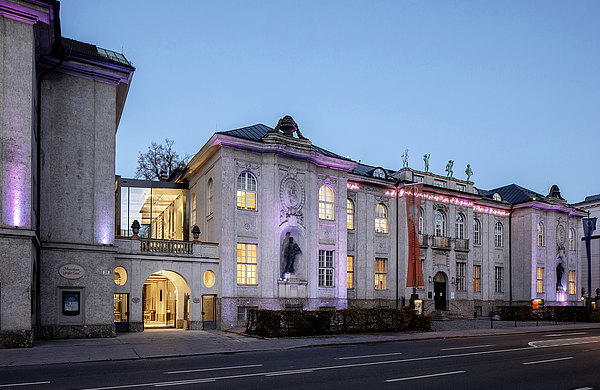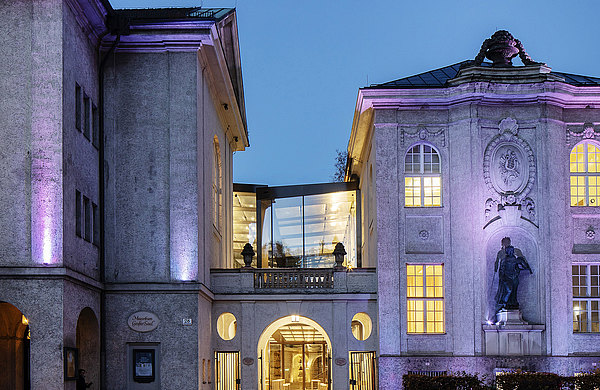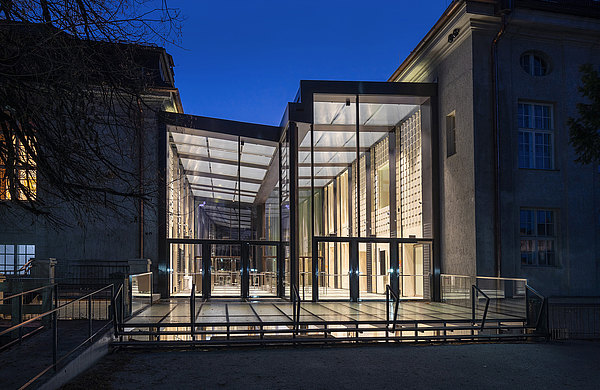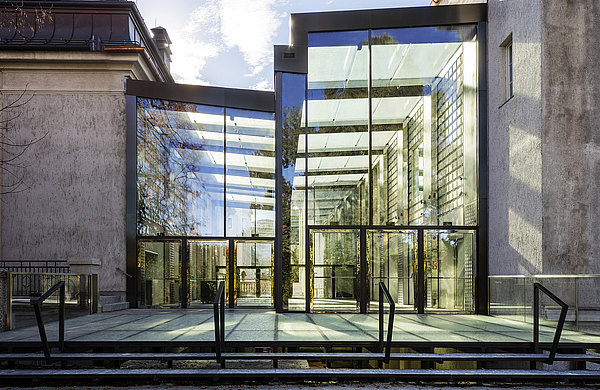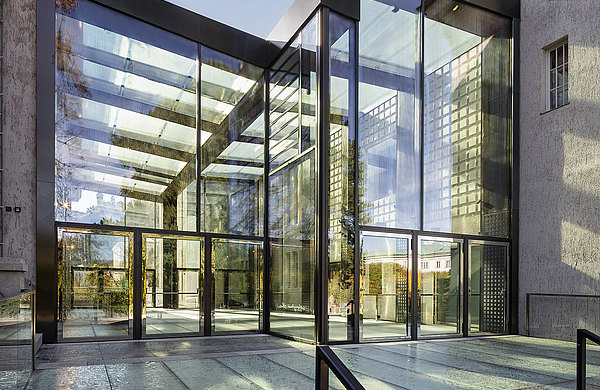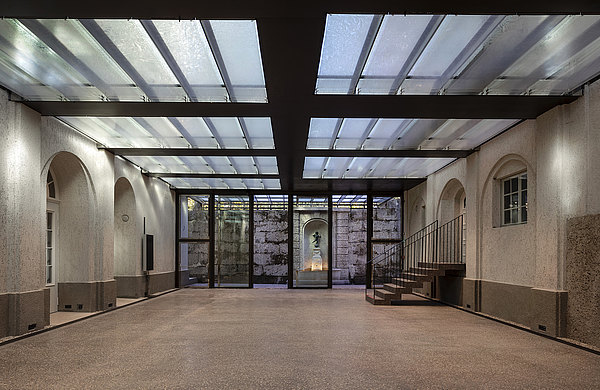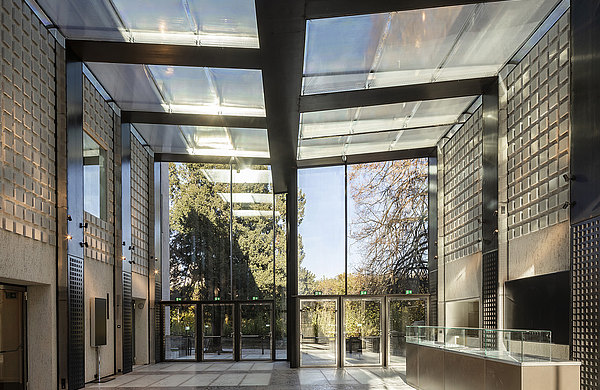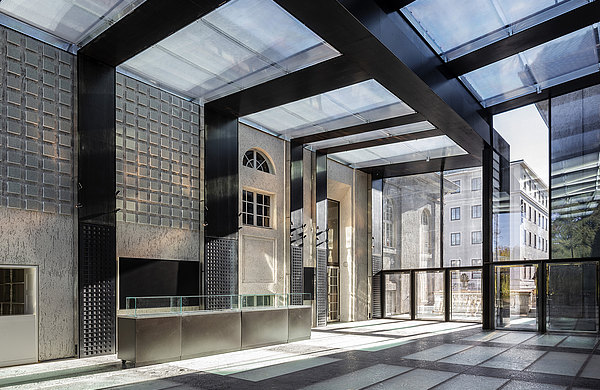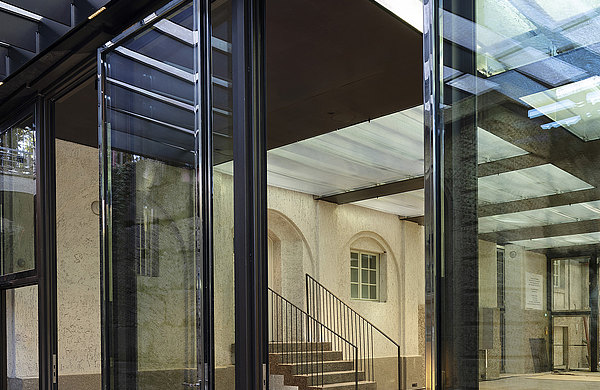The new foyers at Mozarteum Salzburg
Unity in steel and glass
Salzburg is home to one of the most important institutions for preserving Mozart’s musical heritage – the Internationale Stiftung Mozarteum (ISM). Two imposing buildings house a conservatory, collections, administration facilities and concert halls. The building complex traces its origins back to the Villa Lasser, which was purchased by the foundation in 1906. Extensions were added to the villa to cope with the sheer volume of uses inside, with a new concert hall also built in the immediate vicinity. As time went by, issues with development of the building became more prevalent, with barrier-free access in particular proving difficult. A connecting structure was planned to remedy this situation, with the ISM announcing an architecture competition to find a suitable design. The brief was to design a space that opens up towards the city while treating the listed building and its historic surroundings with sensitivity. The winning design was submitted by the architects Flöckner+Schnöll.
Under the guidance of the Salzburg-based architecture office, a bright structure was built in steel and glass that connects the foyers in a modern way. The clever architectural concept relies on a system made of black oiled steel strips and white glass panes. Suspended from the surrounding walls, the steel construction inside is built without supports and gives the foyers a spacious character despite the robustness of the steel. All doors inside the building are constructed with system profiles from Forster – some with impressive leaf heights. The four main doors, for example, are over four metres in height and have a leaf weight of 450 kg. These impressive sizes are possible thanks to the forster unico profile system. The polished surfaces on the slim stainless steel system are a striking design feature, and emphasise the motion of the doors as a contrast to the solid steel of the remaining structure. A total of 16 anti-panic doors ensure safety in the new connecting space, with some equipped with electrically coupled locks that can be opened quickly in an emergency. As a result, the forster unico profile system sets new benchmarks in agility, barrier-free accessibility and safety, and brings the foyers of the Mozarteum into the 21st century.
Salzburg, Austria
Products: Anti-panic doors, outside doors in polished stainless steel and main door with forster unico
Architecture: Flöckner+Schnöll Architekten, Salzburg, Austria
Metal fabrication: Pichler Projects, Bolzano, South Tyrol, Italy
Prefabricated elements: Bloxer
Client: Internationale Stiftung Mozarteum
Photography: Andrew Phelps

